Service Hotline:86-0592-5681408 / 86-17346269651
In modern construction, excavators are no longer limited to their original digging role. By equipping various attachments, an excavator can easily perform tasks such as demolition, smart loading and unloading, waste recycling, and earthmoving. Mastering the types and applicable scenarios of attachments not only helps in accurate selection but also significantly improves efficiency, reduces equipment wear, and lowers overall costs.
This article categorizes attachments into five functional groups and introduces typical attachments of each category, along with their differences, applicable scenarios, working principles, and structures—to help you choose scientifically and apply flexibly.
I. Demolition Attachments: Powerful and Specialized for Tough Jobs
Demolition attachments are essential equipment for replacing blasting with excavation. They are especially suitable for high-risk, high-intensity scenarios such as urban renewal, mine remediation, and demolition of large industrial plants. Compared to traditional manual or blasting methods, attachment-based demolition is safer, more environmentally friendly, and more precise. These attachments require high stability and hydraulic output from the excavator and are commonly mounted on medium to large machines.
TDER once customized a 38-ton crawler excavator for a Russian client, equipped with a long arm, elevating cab, and hydraulic shear, used for demolition work in the Far East. The elevating cab improved visibility for high-altitude operations, the long arm extended the working range, and the hydraulic shear enabled precise and efficient cutting—maximizing attachment synergy.
1. Breaker (Hydraulic Hammer): Breaks concrete or rock through high-frequency impact; ideal for road demolition, foundation excavation, and mine dismantling—perfect for breaking rigid materials.
2. Hydraulic Shear: Powerful cutting force to efficiently sever rebar, H-beams, columns, and other metal structures. Widely used for steel structure demolition, scrap processing, and bridge dismantling. The 38-ton crawler from Russia was equipped with a hydraulic shear for large factory demolition.
3. Pulverizer: Combines crushing and gripping to crush concrete and separate rebar simultaneously—ideal for construction debris and rubble clearance.
4. Demolition Shear: Sharp beak-like tip applies precise force to cut steel plates, rails, and other heavy-duty materials—enhances dismantling accuracy.
5. Double-cylinder Shear: Offers higher cutting force with a dual-cylinder structure—handles extremely thick steel and high-hardness materials.
6. Hydraulic Drilling Rig: Drills blast holes in rock; key equipment in mining, tunnels, and bridge foundations.
7.Rock Saw (Disk Saw): Uses high-speed rotating blades to cut stone, concrete, and inert materials—often used in urban road expansion and quarrying.
8. Milling Head: Equipped with a rotary drum to accurately mill rock, concrete, and frozen soil—widely used in tunnel profiling and mining.
Tip: Although pulverizers and hydraulic shears look similar, they serve different purposes: the former focuses on "crushing and gripping," while the latter is for "cutting."
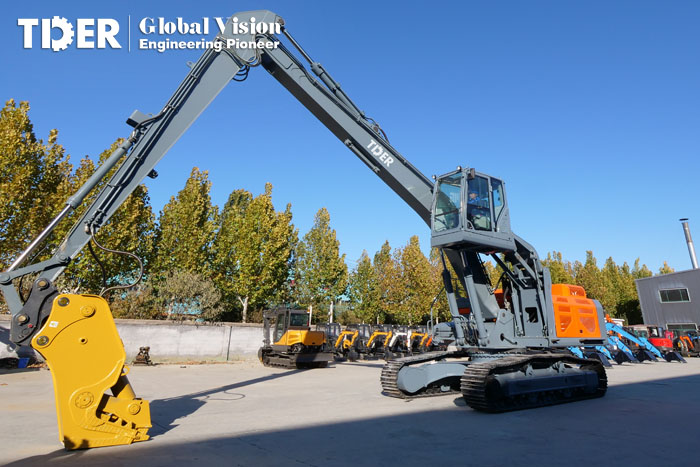
II. Recycling Attachments: Efficient Sorting, Sustainable Use
With the rise of green construction and resource reuse, recycling attachments have become essential for demolition and scrap processing. These tools allow on-site sorting, dismantling, and transport, saving labor and improving recycling efficiency—commonly used in car scrapyards, steel sorting stations, and construction waste transfer areas.
1. Hydraulic Magnet: Uses magnetic or vacuum principles to quickly grab ferrous metals—ideal for steel recycling and scrap transport.
2. Car Dismantling Shear: Excellent multi-directional cutting for vehicle frame dismantling—enhances safety and efficiency.
3. Screening Bucket: Integrates screening of soil, concrete blocks, and mixed materials for on-site classification and reuse.
4. Sorting Grapple: Combines sorting and clamping—efficiently handles mixed waste and reduces manual work.
5. Scrap Grab (Orange Peel Grapple): Petal-like design for strong grip and safety—ideal for scrap yards handling dense metals.
6. Orange Peel Grapple: Biomimetic design conforms to material shapes—used in urban waste, appliance dismantling, and general debris handling.
7. Electromagnetic Magnet: For fast, cyclical metal recycling tasks—uses electric current for powerful attraction.
Note: Though structurally similar, scrap grabs are better for dense metals, while orange peel grapples are suited for irregular and mixed materials.
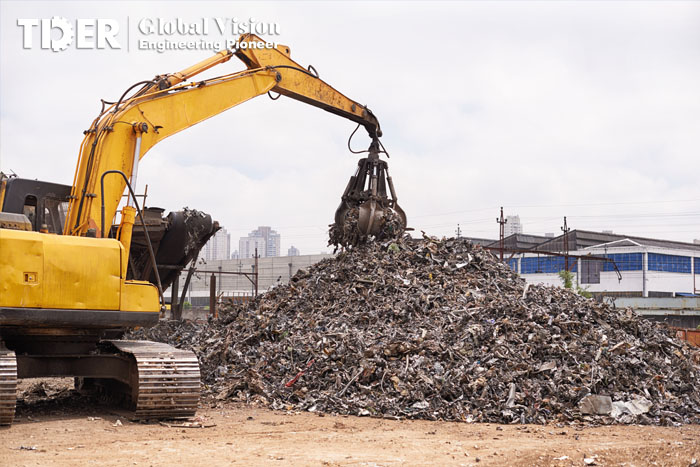
III. Smart Loading Attachments: Flexible Gripping, Efficient Handling
These attachments prioritize operational flexibility, diverse gripping capabilities, and continuous workflow—critical for improving logistics and smart material handling. Especially in ports, forestry, and waste plants, they allow fast adaptation and efficient turnover.
1. Clamshell Bucket: Tightly sealed and precise—ideal for loading sand, coal, and grains without spillage.
2. Log Grapple: Hook-like jaws firmly grip logs—widely used in timber transport after felling.
3. Rotating Log Grapple: 360° rotation enables multi-angle stacking and positioning—ideal for log yards and truck loading.
4. Tilting Bucket: Bucket body can tilt—perfect for slope trimming and edge cleanup.
5. Thumb Attachment: Works with the bucket to grip irregular or loose objects like ties and stones—efficient for light materials.
6. Multi-functional Clamp: Includes brick grab, screening grapple, and bale grab—suitable for construction, agriculture, and waste industries.
Comparison: Clamshell buckets are sealed and leak-proof for granular materials; orange peel grap
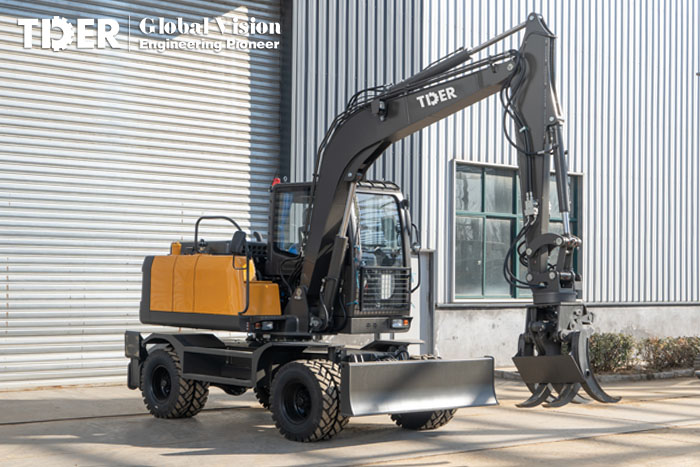
IV. Earthmoving Attachments: Versatile and Geologically Adaptive
Earthmoving attachments are the most common tool group in construction machinery. They adapt to various geological conditions and can handle everything from excavation to leveling and from loosening to rock crushing—serving roads, municipal works, water conservancy, and electrical infrastructure.
1. Auger: Specially designed for drilling in soft to medium-hard soils—widely used in fencing, planting, and foundation piling.
2. Down-the-Hole Drill: Penetrates hard rock layers—ideal for mining, well drilling, and deep rock foundation work.
3. Hydraulic Rake: Levels land and clears debris—efficient for ground prep in forestry and agriculture.
4. Narrow Bucket: Tailored for trenching and pipe laying in confined spaces—enhances urban construction flexibility.
5. Ripper: Single or triple tooth design breaks hard, frozen, or weathered soil—boosts follow-up excavation efficiency. The 38-ton crawler excavator for the Russian client was equipped with a ripper for extreme cold permafrost operations—greatly improving efficiency.
6. Rock Bucket: Reinforced and wear-resistant—suitable for high-impact rock crushing, loading, and transport, often used in mining and road foundations.
7. Harvester Head: Performs felling, debarking, branch trimming, and loading—ideal for integrated forestry operations.
Application Comparison: Narrow buckets excel in confined areas; rock buckets handle high-impact and wear-intensive jobs.
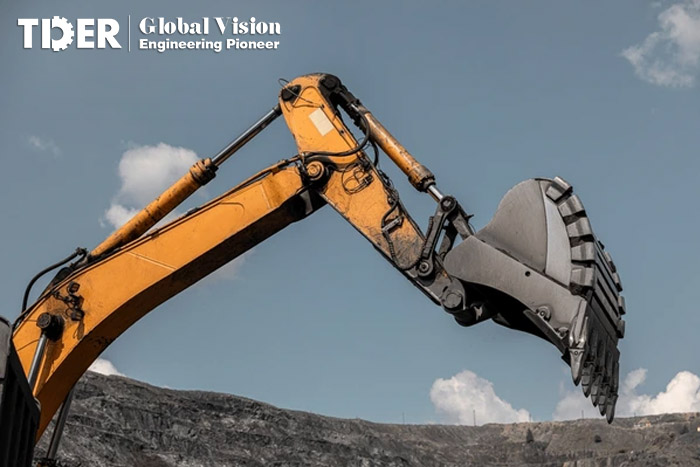
V. Auxiliary Attachments: Boosting Efficiency and Operational Flexibility
Auxiliary attachments may not perform direct tasks but are crucial in enhancing construction efficiency and maintaining workflow continuity. They enable quick switching, angle adjustment, and site adaptability—core to achieving multi-functionality with one machine.
1. Hydraulic Quick Coupler: Enables fast attachment changes without exiting the cab or disconnecting hoses—dramatically improves work rhythm and adaptability.
2. Tilt Quick Coupler: Adds angle adjustment to quick coupler—ideal for uneven terrain and slope construction.
3. Pile Driver: Vertically drives steel, wood, or concrete piles—essential for slope protection, bridge foundations, and hydraulic projects.
4. Compactor (Vibratory Plate): Uses high-frequency vibration to compact soil—suitable for road backfilling and trench compaction.
5. Ice Breaker: Designed for de-icing roads and water surfaces in extremely cold regions—ensures safe winter traffic and project continuity.
Core Value: The hydraulic quick coupler focuses on fast changes, while the tilt quick coupler adds angle adaptability.
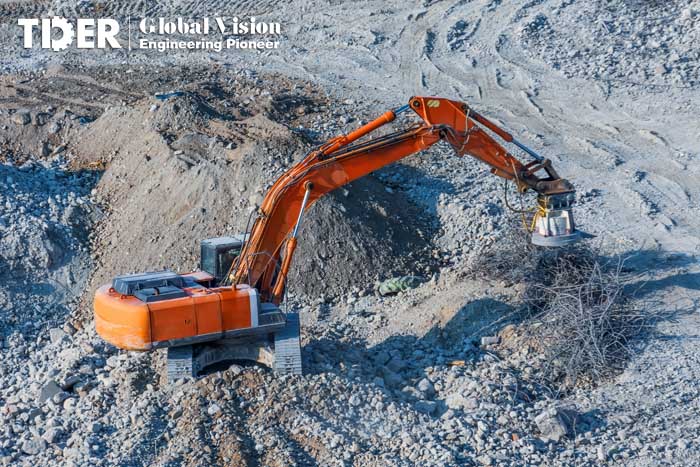
By equipping diverse attachments, excavators evolve from single-purpose “digging tools” to multifunctional platforms capable of demolition, loading, screening, transporting, and drilling. Whether in urban demolition, resource recycling, mining, or infrastructure projects, the flexible combination of attachments greatly expands application boundaries and boosts construction efficiency.
TDER is committed to providing customized attachments and full-machine solutions based on customer work conditions. In the future, TDER will continue to empower clients to conquer complex scenarios with professional attachments and jointly explore global engineering markets.